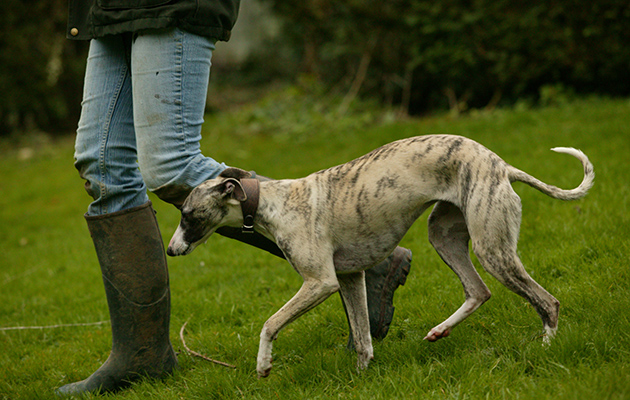Lamping with lurchers
A lurcher is a crossbreed created to retain attributes that will aid working, but what is the best combination for lamping? Ed Cook reports

A lurcher by definition is a crossbred creature, one created by a number of breeds with the intention to retain attributes from each ingredient of the mixture. Such cocktails have been created for centuries – long before it was trendy to cross one breed to another. Some say a lurcher is no more than a mongrel, while there may be some truth in such a statement, on the other side of the coin a pedigree is little more than a family of dogs that has been inbred over a long period of time to ensure they breed true to type.
Why crossbreed?
It’s a fact that there are few breeds, if any, which have all the needed qualities for the job of long hours in rough terrain with the ability to catch rabbits consistently. That said the closest breeds to a good working lurcher in my eyes would either be the whippet or the podenco.
A greyhound has a good top-end speed, but not great feet for rough ground, or stamina. A whippet has great take off speed that matches that of a rabbit, it can turn on a sixpence and game for a battle. They do however have thin skin and can be affected by the cold. A border collie is one of the most intelligent breeds in the world, they are hard, have a lorry load of stamina, are willing to please, yet they don’t have the speed to run down a rabbit in most situations. A calibration of the breeds works well and you retain many of the good qualities from each breed when mixed correctly and from the right stock.

A lurcher works well when mixed correctly and from the right stock
Lamping
My experience with lurchers has always loomed around the border collie, greyhound and whippet amalgamation and for the job of rabbit control. I’ve seen various crosses work over the years on an assortment of quarry. These days my lurcher work is split between ferreting and lamping and will continue that way until the laws change.
I’ve lamped with a variety of lurchers created by the above breeds over the years, and the “purebreds” involved along the way. I’ve been to various points of the UK armed with lamp and mut as part of my job. I must add, such lamping has always been on foot. Over the years “folk” in 4x4s armed with lurchers have caused chaos in pursuit of hares and deer while poaching. Fields have been trashed, gates smashed, and often the lurchers have been left behind. This is not sporting, just vandalism, and sadly the lurcher is often the victim of such actions. Those of us who distance ourselves from that side of the lurcher world, carry out our lurcher work correctly while having the upmost respect for our surroundings, dogs and animals we hunt.
Lamping for rabbits is simple enough. You walk into an area with rabbits, shine a bright light around until you find a rabbit that is far enough out to give a dog a chance of catch. The dog looks down beam of light and then either creeps or runs towards the illuminated rabbit. Some dogs will go out and round, especially if they hold collie blood, and meet the rabbit at end of beam. The dog then either snatches it or the chase is on. It either gets caught or missed, and the dog should return immediately regardless. Then you search for the next – simple.

Ed’s lamping has always been on foot
Lamping with lurchers
So what makes a good lamping dog? If you ask 10 lurchermen, you are certain to get at least 10 different answers! For what it’s worth, I’m not interested in vast amounts of speed, a dog that moves with velocity speed tends to crash in to things. This normally means the dog gets injured. A fast dog will not put more in the bag, but a bit of speed to out pace a rabbit is helpful. This is retained from the greyhound side of the fraction. A whippet offers a nimble ability to twist and turn with the rabbit as it tries every trick in the book to shake off its pursuer. A collie adds brains to “weigh up” a situation and pre-empt the rabbits next move and intercept it, this can save a lot of energy, although such a breed offers plenty.
What fraction would be best for the job of lamping is questionable and largely dependent on the ground you lamp. As a rule; the rougher the ground, or longer the crop, the less running is needed. Also if the rabbits haven’t been lamped too much, you are less likely to need a lot of speed. If you lamp sports fields, then you could well need to go the other way with the breeding. While some folk will swap dogs for the most minor of issues, a dog that is given the opportunity to lamp regularly soon learns the job and often adopts a style that works for them. I have fond memories of lamping with a collie- saturated lurcher by the name of Thawn. She was not the fastest, but she made lamping look so easy and effortless. At the end of the day every venue is different, the rabbit knows the ground better than the dog, and dogs are only perfect in books.








